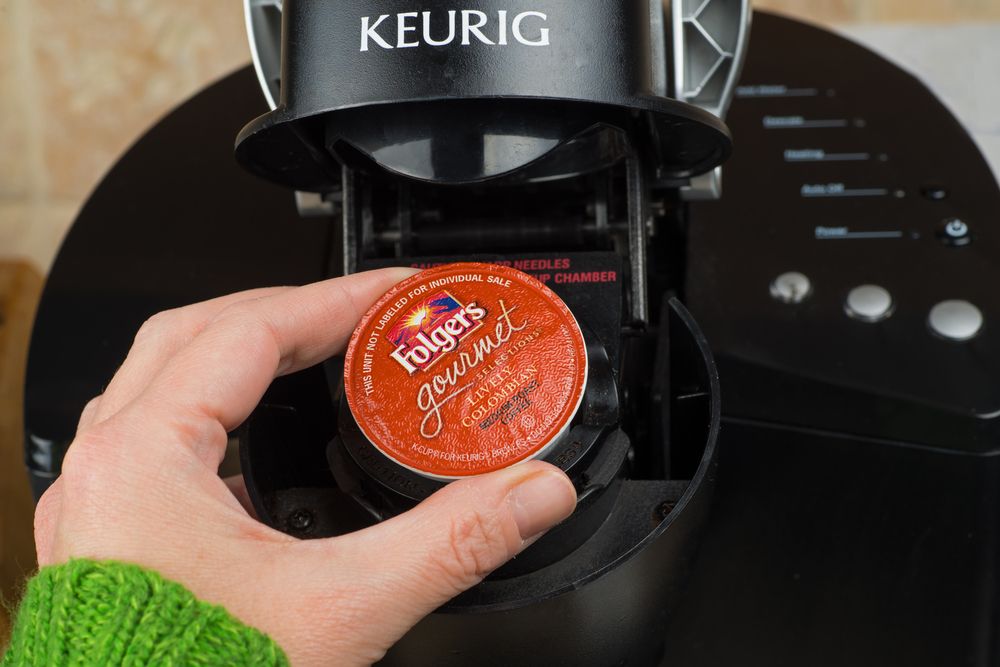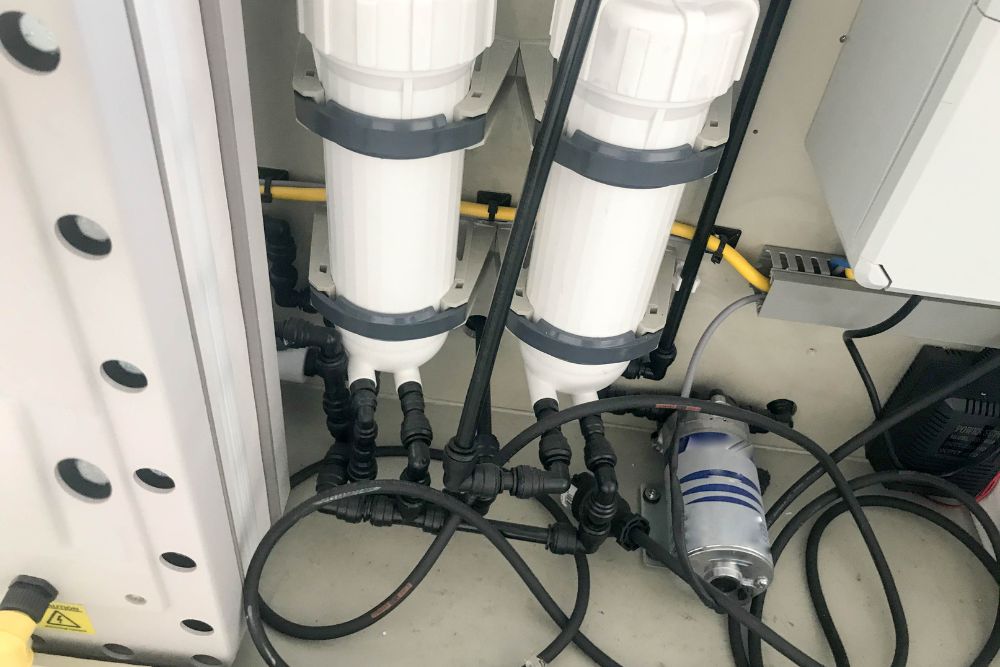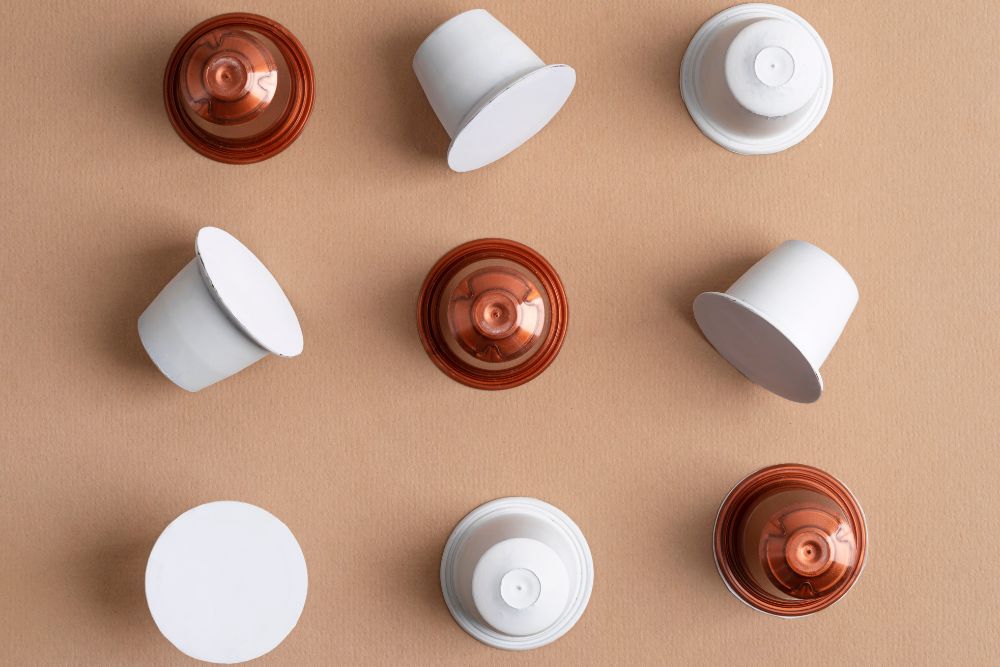If you buy a brand-new coffee machine, you want to ensure you get your money’s worth. So, how long do Keurigs last, and is it worth it? Let’s learn more.

The Keurig coffee maker is one of the most popular home brewers. After the company released its first products in the late ‘90s, it has since taken the coffee world by storm. As of 2021, approximately 33 US households owned a Keurig.
The main reason for the popularity is simple: you can brew a quality cup of coffee with the push of a button. All you need to do to is ensure the water reservoir is filled, put in your K-cup of choice, and let the brewer do all the work.
If you’ve invested in a new Keurig, it’s important to understand how long these machines last so you can budget accordingly. So, how long do Keurigs last? With proper care and maintenance, a Keurig can typically last between three to five years.
Factors That Affect The Lifespan Of Keurigs
There isn’t a set lifespan for Keurig brewers because so many variables play a role in how long they last, such as the following:
Frequency Of Use
Eventually, wear and tear is going to take a toll on your Keurig, no matter how well you care for it. Someone who uses their Keurig multiple times a day will need to replace it sooner than someone who uses it a few times a week. Some customers might find their machine lasting up to a decade, but these are generally those who aren’t heavy coffee drinkers.
Extremely high use will also mean you’re Keurig could degrade sooner than the three-year mark. However, the average family shouldn’t need to worry about this short timeframe. This is mostly relevant for communal Keurigs such as those used in a staff lounge in a business where dozens of cups of coffee are being brewed every day.
Water Quality
Water quality plays a huge role in how long Keurigs and other coffee makers last. Most people use tap water for water tank refills. This can cause issues if you have hard water.
Hard Water

Hard water has more minerals, such as calcium and magnesium, than soft water. Eventually, these minerals start to build up in the Keurig and cause blockages. This is why descaling your Keurig at least twice a year is vital to clean away the limescale buildup.
If you have hard water, you may consider running the water through an ion exchange filter first to soften it to reduce mineral deposits. However, this may not negate the need to descale your Keurig, but simply reduce how often you need to do it.
Distilled Water
You might think that distilled water is the best option for your Keurig, but this isn’t the case. Although distilled water does not have minerals or impurities, many Keurig models cannot brew coffee with distilled water. This is especially true for Keurig 2.0 machines as it is too pure for the machine’s sensors to fully pick up on.
Although Keurig’s do not come with built-in water filters, some models, such as the Keurig K-Supreme range, are compatible with water filters. These can catch impurities to improve the quality of your coffee and the machine’s lifespan, but you will still need to descale several times a year.
Maintenance And Cleaning
Even if you have soft water available, Keurig’s still needs regular cleaning and maintenance. This is to ensure it lasts as long as possible and the coffee remains consistent.
Cleaning
Cleaning and maintenance prevent mold and bacteria from building up. Even though hot water is regularly flushed through the Keurig, this is not enough to kill any mold and bacteria accumulating. Not only will this ruin the coffee taste, but it is a potential health hazard.
Coffee grounds and residue can accumulate around the machine’s puncture needle. This can make the machine less effective and impart a funky taste to your brew.
You should scrub removable parts such as the drip tray, water reservoir, and pod holder with warm soapy water. It’s advised to clean these parts once a week to prevent the build-up of bacteria.
To thoroughly clean the exit needle, pod holder, and funnel, you can find K-cup pods containing a cleaning solution on Amazon. A lot of reviewers were surprised by the gunk that came out of their machine using these pods, having previously thought theirs was clean.
Descaling
As for descaling, you can go for the Keurig descaling solution or one made by another coffee brand to target mineral buildup. If this is not on hand, you can descale your machine with white vinegar and water, using a 1:1 ratio.
To descale, you fill the water reservoir with the cleaning solution and brew without a pod until the tank is empty. Discard the used water in the sink.
Then fill it with clean water and brew as normal again, without a pod, to ensure the solution is flushed out of your Keurig and discard the water again. This step is vital to ensure there is no cleaning solution in your next cup of coffee. Not all Keurig’s have the same descaling process, so it’s advised to check the Keurig website first.
Model Type
There are no official guidelines from Keurig detailing the average lifespan of each model.
As mentioned earlier, each Keurig model will have different care instructions. The brand does offer a one-year warranty, but most models should last longer than that. Keurig also suggests descaling the coffee makers every three to six months to keep them in tip-top shape.
Although all Keurig models are high-quality, some seem to be more highly rated than others in terms of durability and longevity. Many customers found that the Keurig K-Elite coffee maker and the Keurig 2.0 were the most long-lasting. It seems to be smaller models like the K-15 Mini and Keurig K-Select that can show issues sooner.
Keurig Vs. Competitors
While three to five years seems to be the average Keurig lifespan, you might find other coffee makers last longer. For example, Nespresso machines can last from five to ten years. Hamilton Beach also seems to last at least five years, if not longer.
Meanwhile, Tassimo seems to have a similar lifespan to Keurig. Cuisinart models can last for two to five years with proper care. So, as far as pod brewers go, Keurig machines have a fairly standard lifespan, but if you want something to last as long as possible, a Nespresso or Hamilton Beach machine might be for you instead.
If you’re determined to stick with Keurig, our guide on the best Keurig coffee makers may be helpful. You might also be interested in our Nespresso vs. Keurig comparison.
Signs That A Keurig May Need To Be Replaced
There are several warning signs that it’s time to consider replacing a Keurig. Even if you take perfect care of your Keurig, the lifespan of a Keurig can only go on for so long.
Frequent Breakdowns
If your machine is regularly crashing, this is a sign of trouble. This can include having to press the power button multiple times to get your Keurig to turn on or placing a coffee pod in your machine and starting the brew cycle only for nothing to happen.
If you’ve cleaned and descaled your machine recently and ensured it is plugged in properly, then chances are these breakdowns aren’t something you can fix. If you find that your machine is turning on and off even if you didn’t touch it, ensure you have not accidentally tuned on automated brewing before jumping to conclusions.
Poor Performance
Keurig brewers usually take from one to four minutes to brew. If your Keurig is taking a lot longer than this to make your coffee, you need to troubleshoot. If cleaning and descaling doesn’t solve the problem, then it’s time to replace your machine.
Other signs of wear and tear include poor-quality coffee or hot chocolate. For example, your espresso shot might not be hot enough or tastes too weak. If you’re using the same coffee pods and following the same process, but your drinks aren’t coming out the same, then it may be time for a new Keurig.
Another warning sign is if your Keurig still makes coffee, but it has to stop and start several times during the brewing process to do this. Keurig machines also should never leak when not in use. If the culprit isn’t an overfilled water reservoir or clogged needles, then your Keurig is probably past its prime.
Outdated Technology

While it’s great when products last longer than anticipated, eventually, they become outdated. So, if Keurig is no longer selling your model, then there may not be much time left with it before it crashes. Some newer Keurig models can offer hot and cold drinks, hot water, or even be brewed using coffee grounds, so there are tons of new options worth exploring.
There are also pods to consider. For example, all products from the Keurig 1.0 range are compatible with all K-cups, including those from third parties.
The original Keurig 2.0 featured a scanner that prevented the use of third-party pods and reusable My K-Cup pods, but they were quickly discontinued as they were poorly received by customers. These days, all current Keurig models are compatible with all K-cups, but if you still have one of these iterations of the Keurig 2.0, you may decide to get a new machine so you can have more variety in your pod options.
Recommendations
As mentioned earlier, with proper care and maintenance, you can expect your Keurig to last between three to five years. However, this isn’t a firm guarantee, with many customers finding their machines last much longer or give out sooner, depending on how much they use them.
Although the appeal of a Keurig machine is its simplicity and ease of use, these brewers still need a lot of maintenance. You can save time in the morning by popping a pod into your machine and pushing a button, but you are going to have to make time for cleaning once a week and descaling several times a year.
Without investing time into caring for your Keurig, you will simply have to invest in a new machine sooner than you need should it become clogged with limescale. More important than having great-tasting coffee, a dirty Keurig can be a health hazard if mold and bacteria are making their way into your morning cup of Joe.
If you want a fairly long-lasting machine with minimal brewing effort, then a Keurig is for you. This is especially true if you like to try different coffee makers and experiment with newer models, as a Keurig is not a lifetime commitment. However, if you would rather stay with a tried and true coffee maker for a longer period, then you may be happier with a Nespresso machine.
If the maintenance of these machines sounds like too much for you, then your best bet is a classic French press, V60, or AeroPress – or simply, instant coffee for busy mornings.
